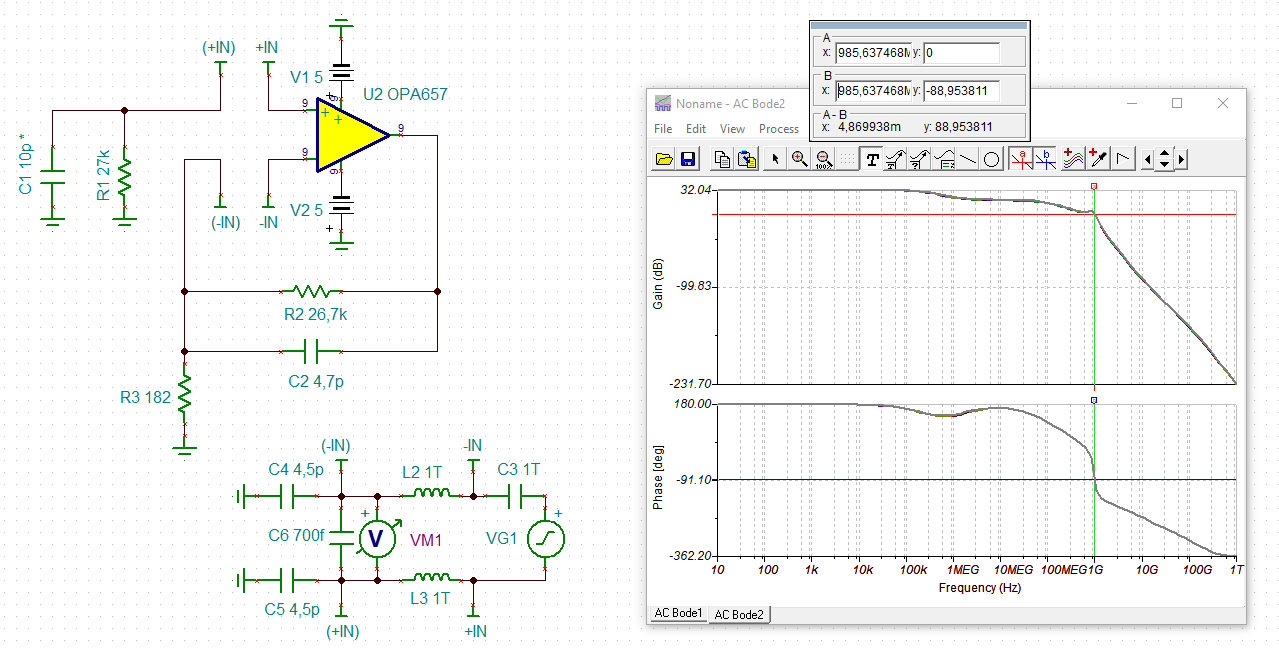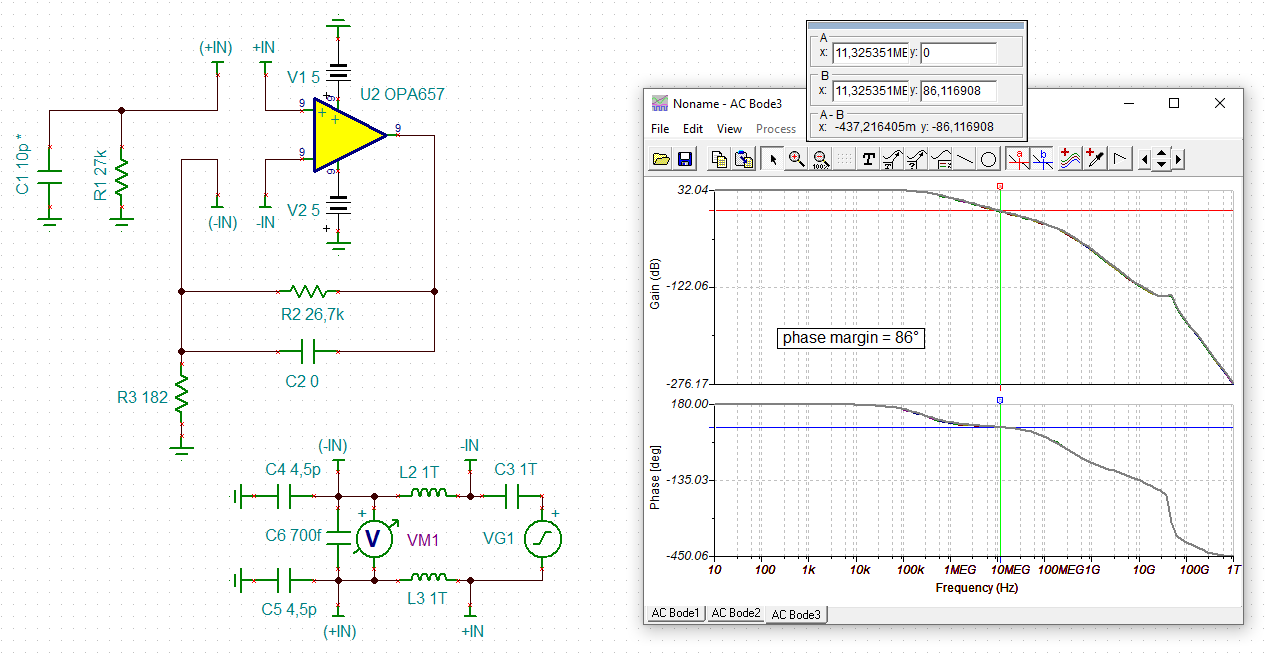Other Parts Discussed in Thread: OPA657, LMH6609
Hi Experts,
Good day. Seeking your advise on this.
I am having problems with your OPA656 transimpedance amplifier.
I am using the amplifier as a convertor for a photodiode. The output DC value starts to change as the part starts to warm up.
This DC value comes back to 0 volts when I cool down the part. We are working at room temperature.
I simulated this design utilizing the TI simulator and it did not show this issue, so I am confused.
Thank you.
Regards,
Archie A.



